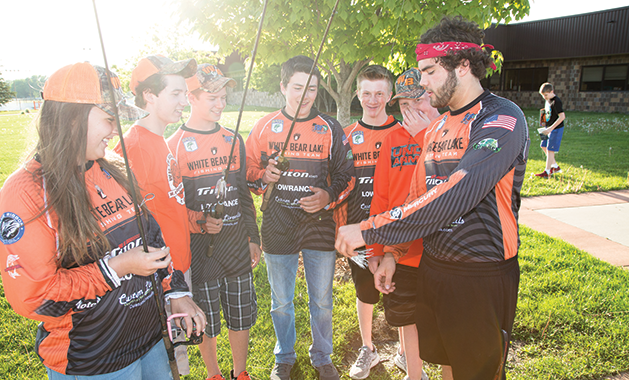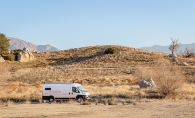
One of the fastest-growing clubs at White Bear Lake Area High School-North Campus started—as many things do these days—with a Google search.
In 2014, local fishermen Tim Snyder and Todd Krantz heard about high school bass tournaments and approached WBLAHS activities director Tim Hermann about starting a club. “He said it was a great idea, but we were missing the kids,” Snyder recalls.
In 2015, WBLAHS student Derek Legrand, who had fished since age 4 and aspired to become a tournament bass fisherman, found online information about the Student Bass Federation. He went to Hermann, who gave him Krantz and Snyder’s contact info. They, along with teacher Jacob Montgomery, helped Legrand get the club going, and now serve as mentors for the group, which has grown to more than 50 members.
In June 2015, two teams from WBLAHS (each team has two members) entered a bass tournament on Lake Minnetonka, finishing eighth and ninth in a field of 36 teams. Two months later, WBLAHS students Spencer Schmidt and teammate Parker Prescott took first place in a tourney on Lake Waconia.
High school bass fishing has been growing rapidly in Minnesota, one of 40 states in the U.S. that offers the activity. “There were 26 boats two years ago, and 98 last year," Krantz says. The Minnesota Department of Natural Resources only allows a maximum of 100 boats in a tourney, so the state high school competition has been divided into three regions—soon to be four, says Krantz, who has fished competitively for muskie and walleye.
When school is in session, the club meets every other Monday. Fishing experts come in to speak, including pro anglers Michaela Anderson, Chris Wosika and Seth Feider (who won Bassmaster Angler of the Year). From the pros, “they get a lot of insider information,” Krantz notes. The team is self-supporting, with help from a few fishing equipment and boat makers, local businesses who have paid for club jerseys, and an annual spring banquet.
Legrand, who graduated last year, says he enjoyed learning fishing tips he can put into practice, such as Montgomery’s lecture on the importance of thermoclines (water temperature gradients). He also likes the fact that some WBLAHS kids “who didn't have a group of their own learned to fish and made new friends.”
Incoming junior Grace Spindler is one of several girls on the team. Spindler, who started fishing with her parents at age 5, enjoys learning new techniques. “Fishing isn't just casting and reeling,” she says. “There's a science to it that includes the weather, the wind, and everything else.”
But to these avid anglers, there's more to the club than just fishing. Members also learn about public speaking, leadership and community service, Montgomery notes. They do shoreline cleanups, have organized an ice fishing tourney for military veterans, helped out at other events, and are participating in the Adopt-A-Highway program (Highway 244 on the east side of White Bear Lake). Club members can earn scholarships for community involvement, Montgomery says. “It's all about education; the fishing is secondary.”
Fishing Club 411
- The Bass Federation and the Student Angler Federation hold a state tourney each year at a Minnesota lake.
- The state championship is a two-person event for students in grades nine through 12.
- Each team can have one member in seventh or eighth grade, if needed.
- The top 10 percent of each 2016 state championship event advances to a FLW/TBF conference regional championship.
- The top 10 percent from the conference regional events advance to the FLW/TBF high school national championship to compete for the top team prize of a $10,000 scholarship.









